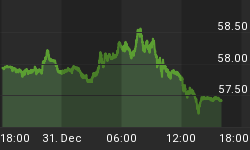We share the belief that the U.S. is in a mortgage-finance/house-price bubble. A common concern, now getting renewed attention, is that increasing numbers of people have turned to Adjustable Rate Mortgages (ARMs) at a time when these rates, recently at 40-year lows, have nowhere to go but up.
ARM rates track T-bill rates and the Fed Funds Rate (FFR). Some pundits believed these borrowers would quickly be impaired as ARM rates rose in line with the Fed's repeated raising of the FFR in recent months. Well, the Fed has raised the FFR five times in the last six months, from 1.0% to 2.25%, but ARM rates have not responded in kind. Here's why.
The chart below is a 20 year history of ARM rates (as collected by the Freddie Mac survey) and T-bill rates, with markers indicating periods of Fed easing and Fed tightening.

The chart shows that during periods of Fed easing, the spread between T-bills and ARMs widened because ARMs did not follow T-bills down, point for point. Conversely, as the Fed tightened, the spread narrowed until T-bill rates rose to within about 1.0% of ARM rates. Thereafter, the rates rose point-for-point.
Thus, history suggests that ARM rates will not begin rising point-for-point with the T-bill/FFR rates until the spread between them is cut to, perhaps, one percent, requiring T-bill rates to rise from today's 2.25% to 3.5% - 4.0% before this kicks in. The question is, when might that happen?
A Barron's poll of 12 economists ("Current Yield," 12/13/2004) showed their average FFR year-end 2005 forecast to be 3.4% - we'll use 3.5% here. If the Fed maintains its "measured" pace in hiking rates, a year-end 2005 rate of 3.5% could prove close to the mark. And, if historical precedent on narrowing the spread again holds true, ARM rates might drift only slightly higher by year-end.
It, therefore, seems that ARM borrowers will be ARMed until T-bill/FFR rates get to, or through, 3.5%, at which time, these rates will begin moving point-for-point.
















